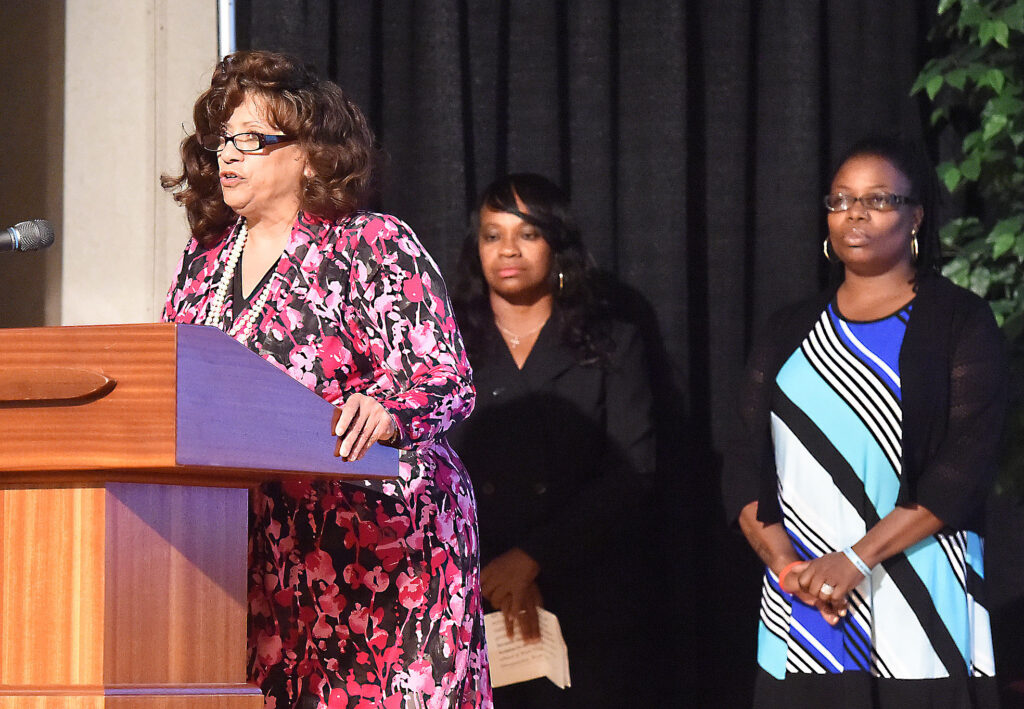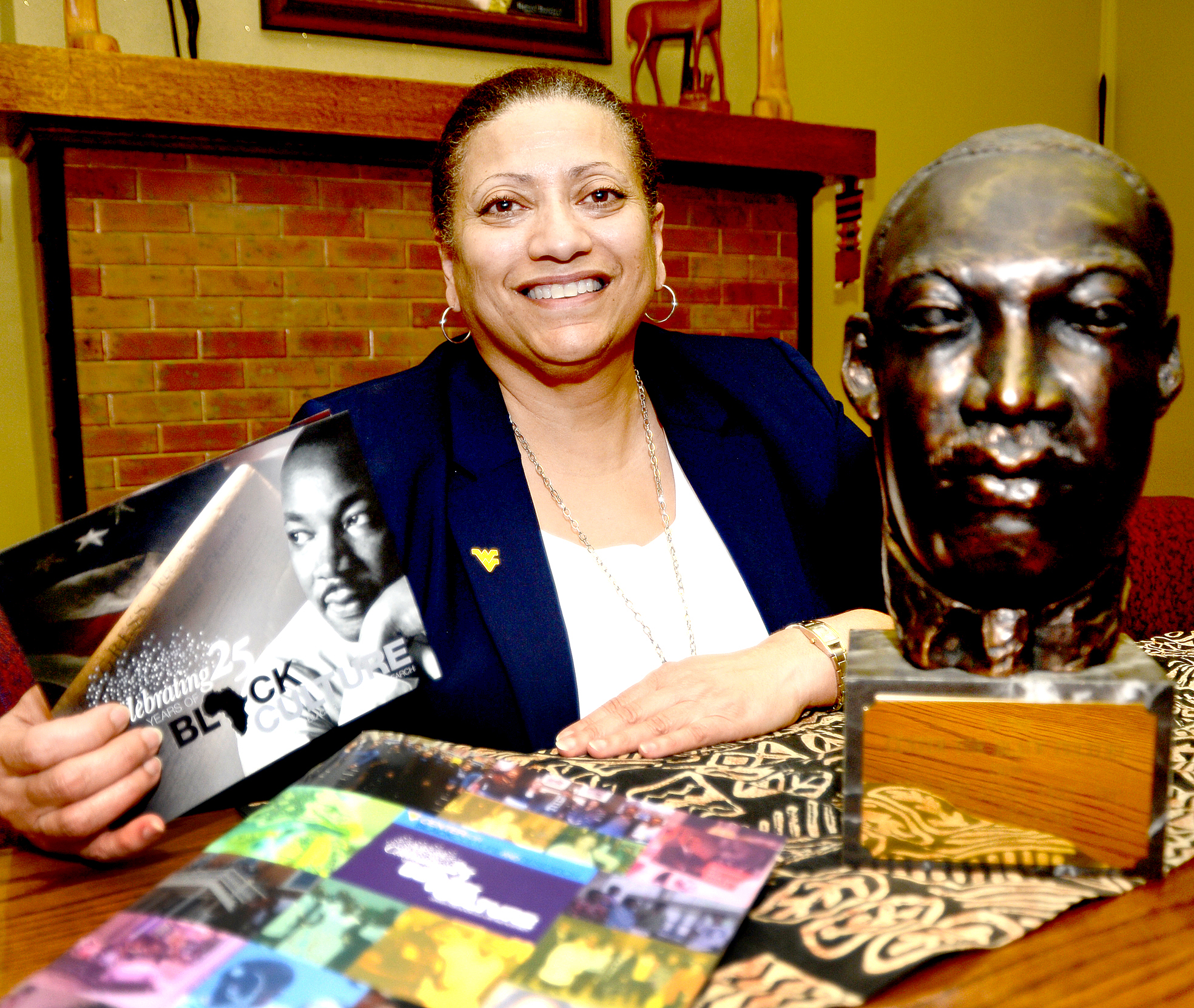When a professor successfully bridges history – that is, when she makes those long-ago dates and locations link up to present-day relevance – she surely knows it.
“They’re feeling this,” WVU’s Marjorie Fuller said on the Edmund Pettus Bridge that day.
“Because I know I’m feeling this.”
It wasn’t that long ago (although the pandemic makes it seem that long ago), that Fuller, who directs the university’s Center for Black Culture and Research, was leading students on one of her famous civil rights sojourns to the American South.
On this particular trip, she and the other visitors from the land grant university of the only state born of the Civil War stood on that bridge in Alabama that was a reverse-infrastructure metaphor, of sorts.
Because the Edmund Pettus Bridge kept people right where they were, as opposed to crossing over to something that might have the potential to be better.
At least that’s what it did on March 7, 1965.
On the afternoon of that Sunday – it would come to be known as “Bloody Sunday,” in the Civil Rights movement – some 600 kindred souls were kicking up Alabama dust along U.S. 80 in Selma.
They were intent on marching 50 miles down the road to the state capital of Montgomery, where they would raise their collective voice as one against the Jim Crow suppression leveled at Black Americans who wanted to do what every other American did on Election Day.
To simply cast a ballot.
You could forget that, if you happened to be a person of color in the Heart of Dixie on March 7, 1965.
There were impossible prerequisites, arcane pronouncements and “Are you kidding me?” potholes at every turn.
Go to register, and you might be told you were supposed to be here last week, or, doggone it, the people who process the paperwork aren’t in – and we sure as shoot don’t know if they’re coming back today.
And looka there: You didn’t spell out your middle name on that part.
Bless your heart, sugar, you were supposed to abbreviate there.
Now, you are aware there’s a test to go with your application?
No, no, we’ll do it right here. I’ll just need you to recite the Constitution, then you can tell me how the tax code works again.
Hey, I’m just trying to get y’all signed up to vote.
And “Bloody Sunday,” was right.
Those marchers were just six blocks in when they hit the Edmund Pettus Bridge – and a wall of badges, billy clubs and tear gas.
They were punched and stomped, and John Lewis, who was helping lead the march and would go on to gain elder statesman status in Washington as a 17-term congressman and civil rights titan, was one of the first to fall.
Skull fracture.
A sickening whomp! of a billy club over his head.
As his knees were going and his vision was compressing to an inky tunnel, a son raised by sharecroppers could still regard the Alabama state trooper who had wielded the baton.
“I thought I saw death,” Lewis would later recall.
All of America saw it in their living rooms via CBS News, the social media of its day.
And decades removed on that bridge that short while ago, Fuller’s students saw it, too: It was hard not to time-travel, their professor said.
This history is their history too, she said.
The marchers were halted again at the bridge two days later – but that didn’t mean they stopped.
By the time they were done, President Lyndon Johnson would pick up an official ink pen, to sign the Voting Rights Act of 1965 that August.
That the WVU students were standing on that very bridge where it all started, really, made it sharper than any grainy ’60s TV footage or passive-voice textbook entry.
“You have to be where it happened to really experience it,” Fuller said.
She gets that naturally.
After all, she grew up walking the very rails of Black history.
Coal miner’s daughter
Fuller was born in Wheeling, the hometown of her coal miner father, Ed.
Her mom, Lydia, hailed from the Commonwealth of Virginia.
When the mines tapped out when she was a toddler, the family moved to northeastern Ohio for work, settling in Ashtabula, an hour north of Cleveland on the shores of Lake Erie.
Canada beckoned 50 miles across the water of that Great Lake, and that’s why her new hometown was a key hub, perhaps the key hub, on the Underground Railroad – which was code for the safe houses used to help transport slaves to 14 free states, plus the country just across the water that welcomed all.
Ashtabula proper, and Ashtabula County, were well-established in the network by the mid-1800s.
Fuller was a kid never too far away from a book. Her whole family was made up of avid readers.
She was 10 when Martin Luther King Jr. was killed in Memphis – not yet aware to fully participate in family discussions of the news of the day, but aware enough.
All that reading, though, coupled with the intellectual bent in her house, made even a little girl realize important things were happening in the world: Things, that, for better or worse, directly affected Black families such as hers.
The very living room walls in the homes of many of her friends, in fact, were venues of the fallen.
Cut-out photographs of Martin Luther King and Bobby Kennedy shared space with sepia-toned studies of great-grandparents long gone, Picture Day captures from school and the requisite, oh-so-posed family portrait from Olan Mills.
Makeshift memorials to martyrs of time and place, those walls were.
The dead and the living. The potential, framed up against the tale already played out.

Educational philosophy, formed
After high school, Fuller stayed in the region for college.
She earned degrees in English and Pan-African Studies at nearby Kent State University, eventually joining the faculty there for a time.
The pursuit of graduate school took her out of Ohio and more into the Midwest, where she made her professional name.
She was director of Diversity Affairs at Wartburg College, in Waverly, Iowa, and followed another opportunity to Illinois at Knox College.
At the school that hosted the Lincoln-Douglas debates in 1858, Fuller was an assistant dean for Intercultural Life. Knox was where those civil rights sojourns began.
She got the idea from a faculty member who was doing his version of the field study.
Fuller came to WVU in 2008 to head the Center for Black Culture and Research, where those trips continued until last spring, when they were interrupted by the coronavirus.
Once the world emerges from the pandemic, she said, she and her students will venture back out in the world.
As she said: What’s better than reading Gwendolyn Brooks while physically on the South Side of Chicago, or Langston Hughes, while taking in Harlem?
You say you want to learn about Black conquistadors in early America?
Well, she’s been to St. Augustine, Fla., more than once for that exploration.
It’s all out there and it’s all right here, she said.
“These aren’t spring break pleasure trips,” Fuller said. “Our students are working the whole time.”
She misses the interaction with those students at the Center for Black Culture and Research.
From its Spruce Street location, the center offers a multitude of outreach and diversity, including its signature STARS program, which stands for, Students Achieving and Reaching Success.
She appreciates the innovations of program coordinator Eric Jordan, whose late father, Norman Jordan, an actor and storyteller, was renowned across the region for his portrayals of Black leaders and others advancing the cause across West Virginia and Appalachia.
Spanning politics and people
As said, the aforementioned John Lewis lived to tell about it that March day back in 1965 on the Edmund Pettus Bridge.
He was 25 years old when he was beaten to the pavement. He died at the age of 80 in July after a bout with cancer.
From Selma came Minneapolis.
And George Wallace begat Barack Obama, in every sense of the protest word.
Lewis, who called his civil rights work the act of getting into “good trouble,” didn’t get to see Kamala Harris in the White House.
Nor did he see rioters in the U.S. Capitol Building – which was another move to voter suppression.
But he did get to meet Fuller and her students in Atlanta on a Knox College field trip to the chrome-and-glass urban centerpiece of what was known as the “New South” for years.
The Georgia lawmaker graciously introduced himself to everyone in the Knox delegation and spent several minutes speaking individually to each one, asking them about their backgrounds and aspirations.
It’s easy to become even more cynical and angry about matters of race in the 21st century as the 1960s, Fuller said, since the only thing that’s changed with the vitriol, as she put it, is the delivery system of social media.
Twitter, in place of Walter Cronkite.
“We’ve heard it all before,” she said. “The language isn’t anything new.”
However, Fuller said, for every “bad” swing of the racial pendulum, there’s a resulting “good” arc – when it comes back the other way.
“I have faith in people,” she said.
“I’m not worried. I know we’re inherently good.”
Lewis made a final trip across the Edmund Pettus Bridge in July.
A horse-drawn caisson delivered the flag-draped casket that carried his body across the span, and over the red rose petals that were sprinkled to represent the blood previously spilled there.
Alabama state troopers were waiting on the other side, and they offered a salute.
Every single one.
TWEET @DominionPostWV




